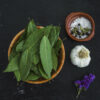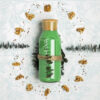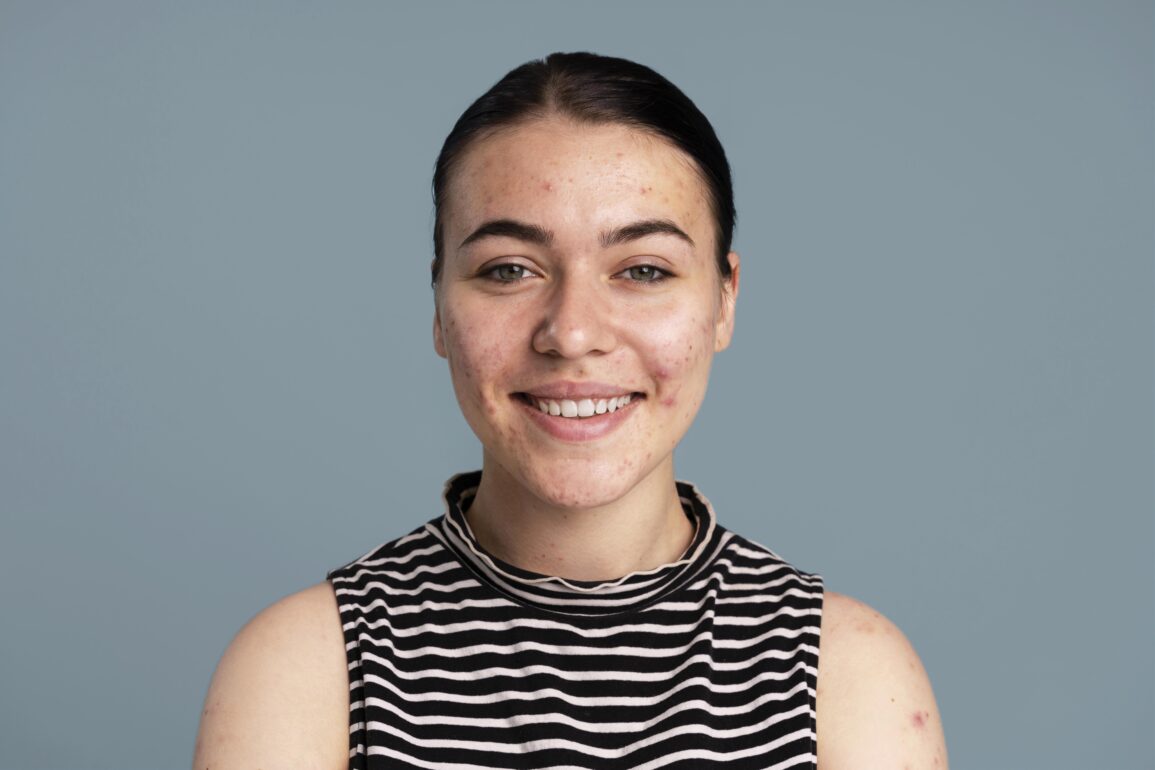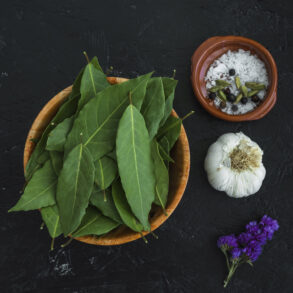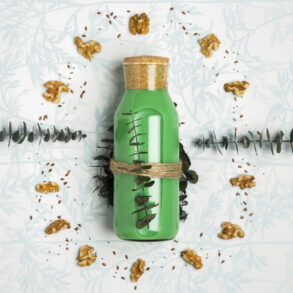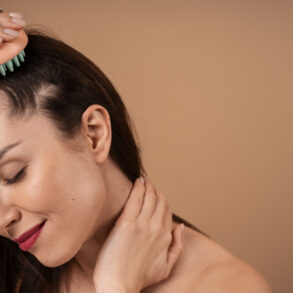The battle against acne doesn’t always end when the redness subsides and the last painful blemish vanishes. For millions of individuals, the most persistent and frustrating legacy of acne is the scarring it leaves behind. These acne scars, a visible record of past inflammation, can range from deep pits and rolling texture to discolored marks that linger for months or even years. The psychological impact of these acne scars can be profound, affecting self-esteem and confidence long after the active breakout phase has passed. While the market is flooded with high-tech procedures and potent chemical solutions, a parallel, powerful path to healing exists in the realm of botanicals. This comprehensive guide delves deep into the world of dermatologist-endorsed herbal solutions for acne scars, providing a science-backed, natural arsenal for anyone seeking to improve their skin’s texture and tone. Effectively treating acne scars requires a multifaceted approach, and understanding the nature of your specific acne scars is the critical first step.
The journey to fading acne scars is one of patience and consistency. It’s important to set realistic expectations; while herbal solutions can produce remarkable results, they work gradually by supporting the skin’s own healing processes. The goal of using these natural compounds for acne scars is not to erase them overnight but to consistently encourage skin regeneration, reduce pigmentation, and improve overall skin health. This guide will equip you with the knowledge to select the right herbs for your type of acne scars and integrate them safely and effectively into a holistic skincare routine. Managing acne scars is a long-term commitment, but with the right strategies, significant improvement is achievable.
Disclaimer: This article is for informational purposes only and is not a substitute for professional medical advice, diagnosis, or treatment. Always consult a board-certified dermatologist before starting any new treatment for your acne scars, especially if you have severe or widespread scarring. Individual results will vary.
Part 1: Understanding the Enemy – A Deep Dive into the Types and Formation of Acne Scars
Before seeking solutions, one must first understand the problem. Not all acne scars are created equal, and their formation dictates the most effective treatment approach. Using the wrong treatment for your specific type of acne scars can lead to wasted time, money, and frustration.
1.1 The Pathophysiology: How Acne Lesions Become Acne Scars
Acne scars are the result of the skin’s complex inflammatory wound-healing process going awry. When a severe acne lesion—such as a papule, pustule, or, more seriously, a nodule or cyst—develops, it creates significant inflammation deep within the dermis. This inflammation damages the skin’s structural components, including collagen and elastin fibers. The body attempts to repair this damage, but the outcome is imperfect, leading to the formation of various types of acne scars. The severity and depth of the initial inflammation are key predictors of whether persistent acne scars will form.
1.2 Classifying Acne Scars: The Three Main Categories
Dermatologists classify acne scars into three primary categories, each requiring a slightly different therapeutic strategy.
I. Atrophic Acne Scars (Depressed Scars)
Atrophic scars are the most common type of acne scars. They occur when the skin fails to produce enough new collagen and tissue during the healing process, resulting in a loss of volume and a depression or pit in the skin’s surface. There are three main subtypes of atrophic acne scars:
- Ice Pick Scars: These are deep, narrow, and sharply demarcated scars that extend vertically into the dermis, making them resemble small, deep holes in the skin. They are among the most challenging acne scars to treat due to their depth.
- Boxcar Scars: These are broad, depressed scars with well-defined, vertical edges. They are typically round or oval in shape and give the skin a pitted, uneven appearance. Shallow boxcar acne scars are more responsive to treatment than deeper ones.
- Rolling Scars: These scars have a wave-like appearance and are caused by fibrous bands of tissue tethering the deeper dermis to the superficial skin. These bands pull the epidermis down, creating broad, shallow depressions with sloping edges. Addressing these tethering bands is crucial for treating rolling acne scars.
II. Hypertrophic and Keloid Acne Scars (Raised Scars)
These less common acne scars occur when the body produces an excess of collagen during the healing process, leading to a raised, firm mass of tissue on the skin’s surface.
- Hypertrophic Scars: These raised acne scars remain confined to the boundaries of the original wound.
- Keloid Scars: These are more aggressive raised acne scars that grow beyond the original wound site and can be itchy or painful. They are more common in individuals with darker skin tones.
III. Post-Inflammatory Hyperpigmentation (PIH) – Often Mistaken for Acne Scars
While not a true scar involving textural change, PIH is a very common sequel to acne and a primary concern for those seeking to clear their complexion. These are flat spots of discoloration—ranging from pink and red to brown and black—that remain after an acne lesion has healed. They are caused by an overproduction of melanin (skin pigment) in response to inflammation. Although PIH is not a structural scar, its visual impact is significant, and many herbal strategies for acne scars are exceptionally effective at targeting this discoloration.
Part 2: The Herbal Arsenal – Science-Backed Botanicals for Treating Acne Scars
The following herbs have been selected based on robust phytochemical profiles and clinical evidence that supports their role in mitigating the appearance of acne scars. Dermatologists often recommend these as supportive, natural actives that can enhance a comprehensive scar management plan.
2.1 Centella Asiatica (Cica or Gotu Kola) – The Collagen Stimulator
Why it Works for Acne Scars: Centella Asiatica is arguably the most powerful herbal ingredient for addressing atrophic acne scars. Its efficacy in wound healing and scar prevention and treatment is well-documented in numerous scientific studies.
- Mechanism of Action:
- Stimulates Collagen Synthesis: The key active compounds in Centella Asiatica—asiaticoside, madecassoside, and asiatic acid—are renowned for their ability to directly stimulate the activity of fibroblasts. Fibroblasts are the cells in the dermis responsible for producing collagen, elastin, and other components of the extracellular matrix. By boosting the production of these structural proteins, Centella Asiatica helps to plump the skin from within, gradually filling in and softening the appearance of depressed acne scars.
- Promotes Angiogenesis: It encourages the formation of new blood vessels, improving blood circulation and delivering more oxygen and nutrients to the scarred area, which is essential for effective tissue regeneration in areas affected by acne scars.
- Powerful Anti-Inflammatory: It calms the lingering, subclinical inflammation that can impede the healing process of existing acne scars and potentially lead to new ones.
- Antioxidant Protection: It protects fragile, newly formed collagen from being broken down by free radicals.
- Best For: All types of atrophic acne scars (ice pick, boxcar, rolling), improving overall skin elasticity, and reducing the redness associated with early or red acne scars.
- Dermatologist-Recommended Application:
- Look for serums, creams, or gels with a high concentration of Centella Asiatica Extract, Madecassoside, or Cica.
- Products should be applied to clean skin twice daily, focusing on areas with acne scars.
- Consistency is key; results in improving the depth of acne scars are typically seen after 2-3 months of continuous use.
2.2 Licorice Root Extract – The Brightening Powerhouse
Why it Works for Acne Scars: Licorice root is a dermatologist-favorite for targeting the discoloration left by acne scars, particularly Post-Inflammatory Hyperpigmentation (PIH). It offers a gentle yet effective alternative to more aggressive chemical brighteners.
- Mechanism of Action:
- Potent Tyrosinase Inhibition: The primary active component, glabridin, is a powerful and well-researched inhibitor of the tyrosinase enzyme. Tyrosinase is critical for the production of melanin. By blocking this enzyme, licorice root extract effectively prevents the formation of new dark spots and helps to fade existing pigmentation associated with acne scars.
- Anti-Inflammatory Action: Licorice root contains other compounds, such as licochalcone A, which have significant anti-inflammatory properties, helping to soothe the red and pink tones of Post-Inflammatory Erythema (PIE), another form of discoloration from acne scars.
- Antioxidant Benefits: It provides protection against oxidative stress, which can exacerbate pigmentation issues.
- Best For: Fading Post-Inflammatory Hyperpigmentation (the dark brown/black marks from acne scars) and reducing redness.
- Dermatologist-Recommended Application:
- Seek out brightening serums, spot treatments, and moisturizers that list Licorice Root Extract or Glabridin high on the ingredient list.
- It is often synergistically formulated with other brightening agents like Niacinamide, Vitamin C, or Kojic Acid for enhanced effects on discolored acne scars.
- Daily use in the morning and evening is recommended. Crucially, sunscreen must be applied every morning without fail, as UV exposure can darken PIH and counteract the brightening benefits on acne scars.
2.3 Rosehip Seed Oil – The Regenerative Emollient
Why it Works for Acne Scars: Rosehip seed oil is a dry, non-comedogenic oil celebrated for its high concentration of skin-regenerating compounds, making it an excellent natural treatment for both the texture and discoloration of acne scars.
- Mechanism of Action:
- Natural Source of Retinoic Acid: It contains small amounts of trans-retinoic acid, a natural form of Vitamin A. Vitamin A is the gold standard for promoting skin cell turnover, encouraging the shedding of pigmented, damaged skin cells from the surface of acne scars and revealing fresher, more even-toned skin underneath.
- Essential Fatty Acids: It is rich in linoleic (Omega-6) and linolenic (Omega-3) acids. These fats are crucial for repairing and strengthening the skin’s lipid barrier, which is often compromised in skin prone to acne scars. A healthy barrier is better able to heal and regenerate.
- Powerful Antioxidants: It is packed with Vitamins A and C, both of which are vital antioxidants that protect the skin, fight free radical damage, and support the natural collagen production process essential for remodeling acne scars.
- Best For: Improving overall skin texture and elasticity, fading mild to moderate discoloration from acne scars, and providing deep hydration without clogging pores.
- Dermatologist-Recommended Application:
- Use a few drops of cold-pressed, unrefined rosehip seed oil as the last step of your nighttime skincare routine, either alone or mixed with your moisturizer.
- Gently press the oil into the skin, focusing on areas with acne scars.
- It is suitable for most skin types, including oily and acne-prone skin, due to its non-comedogenic nature.
2.4 Green Tea Extract (EGCG) – The Anti-Inflammatory Shield
Why it Works for Acne Scars: The primary polyphenol in green tea, Epigallocatechin Gallate (EGCG), is one of the most potent natural anti-inflammatory and antioxidant compounds known, making it invaluable for preventing and treating the inflammatory roots of acne scars.
- Mechanism of Action:
- Powerful Anti-Inflammatory: EGCG directly targets and soothes inflammation at a molecular level by inhibiting pro-inflammatory pathways. Since inflammation is the driving force behind all acne scars, calming it is a fundamental step in preventing severe scarring from forming in the first place and in creating a better environment for existing scars to heal.
- Potent Antioxidant: It provides a robust defense against free radicals generated by UV exposure and pollution, which can break down collagen and worsen the appearance of acne scars.
- Antimicrobial and Sebum-Regulating: While these properties are more directly relevant to active acne, controlling bacteria and oil creates a less inflammatory environment, reducing the risk of new lesions that could lead to new acne scars.
- Best For: Reducing redness and inflammation in new and old acne scars (particularly PIE), providing overall antioxidant protection, and serving as an excellent preventive measure.
- Dermatologist-Recommended Application:
- Look for green tea extract in toners, serums, and moisturizers.
- For a simple, at-home supplement to your routine, you can brew a strong cup of organic green tea, let it cool completely, and use it as a soothing facial mist or a compress on areas with inflamed acne scars.
2.5 Turmeric (Curcumin) – The Golden Healer
Why it Works for Acne Scars: A cornerstone of Ayurvedic medicine for centuries, turmeric’s active compound, curcumin, has compelling scientific evidence supporting its remarkable wound-healing and anti-inflammatory properties, which are highly applicable to treating acne scars.
- Mechanism of Action:
- Potent Anti-Inflammatory: Curcumin is a powerful blocker of NF-kB, a key protein complex that activates the body’s inflammatory response. By dampening this response, it directly addresses the persistent redness and inflammation that characterizes many acne scars, especially PIE.
- Enhances Wound Healing: Studies have shown that curcumin can modulate the activity of fibroblasts and inflammatory cells during the proliferation phase of healing, leading to better collagen organization and improved tensile strength of newly formed tissue, which is critical for repairing acne scars.
- Antioxidant Activity: It neutralizes a wide range of free radicals.
- Best For: Reducing the redness and inflammation of Post-Inflammatory Erythema (PIE) and supporting the overall wound healing process of acne scars.
- Dermatologist-Recommended Application:
- Crucial Note: Pure turmeric powder can intensely stain the skin yellow. It is highly recommended to use professionally formulated skincare products containing Curcumin extract rather than attempting DIY turmeric pastes.
- Look for serums, overnight masks, or creams that list Curcumin or Turmeric Extract as an ingredient.
2.6 Gotu Kola (See Centella Asiatica)
Note: Gotu Kola is another common name for Centella Asiatica. The benefits and mechanisms described in section 2.1 are identical.
2.7 Aloe Vera – The Soothing Hydrator
Why it Works for Acne Scars: While not a miracle cure for deep acne scars, pure aloe vera plays a valuable supporting role through its exceptional soothing and hydrating properties.
- Mechanism of Action:
- Anti-Inflammatory and Soothing: Aloe vera contains compounds like acemannan and glycoproteins that reduce inflammation and provide a calming sensation, which is helpful for red, irritated acne scars.
- Promotes Hydration: Its mucilaginous gel is an excellent humectant, drawing moisture into the skin. Well-hydrated skin has a plumper, smoother appearance, which can temporarily make the depressions of acne scars less noticeable.
- Supports Healing: It creates a moist wound-healing environment, which is generally considered superior to a dry one for tissue repair.
- Best For: Soothing redness and irritation, providing non-greasy hydration, and supporting the overall health of skin recovering from acne scars.
- Dermatologist-Recommended Application:
- Use pure, 100% aloe vera gel (from a reputable brand, or fresh from the plant) as a lightweight moisturizer or a soothing mask on areas with acne scars.
- It can be applied multiple times a day as needed for calming relief.
Part 3: Building a Holistic Herbal Routine for Treating Acne Scars
Creating a consistent, multi-pronged routine is essential for effectively targeting acne scars. Here is a sample regimen that integrates these herbal powerhouses.
The Morning Routine (Focus: Protect & Prevent)
- Gentle Herbal Cleanser: Cleanse with a mild, non-stripping cleanser. Optionally, one containing green tea extract can provide an antioxidant boost.
- Antioxidant Toner: A toner with Green Tea Extract or Centella Asiatica to calm the skin and prepare it for subsequent products.
- Brightening Serum: A serum featuring Licorice Root Extract to target dark spots from acne scars. Niacinamide is an excellent complementary ingredient here.
- Moisturizer: A lightweight, non-comedogenic moisturizer. One containing Centella Asiatica or aloe vera is ideal for soothing skin with acne scars.
- Sunscreen (NON-NEGOTIABLE): A broad-spectrum SPF 30 or higher. Sun protection is the single most crucial step in any routine for acne scars. UV exposure darkens PIH, breaks down collagen, and perpetuates inflammation, undoing all other treatment efforts.
The Evening Routine (Focus: Repair & Regenerate)
- Double Cleanse:
- First Cleanse: An oil cleanser or balm to remove sunscreen and impurities.
- Second Cleanse: Your gentle herbal water-based cleanser.
- Repairing Serum: A serum with a high concentration of Centella Asiatica and/or Rosehip Seed Oil to stimulate collagen and support overnight repair of acne scars.
- Treatment Oil/Moisturizer: A few drops of Rosehip Seed Oil or a richer cream containing it to lock in moisture and provide regenerative fatty acids to the skin affected by acne scars.
- (1-2 Times per Week) Herbal Exfoliation/ Mask:
- Exfoliation: While not an herb, using a gentle chemical exfoliant like an AHA (Lactic Acid, Mandelic Acid) or a PHA can dramatically enhance results by accelerating the removal of pigmented, dead skin cells covering acne scars, allowing your herbal actives to penetrate more effectively. Introduce this slowly and with dermatologist guidance.
- Soothing Mask: A mask with Aloe Vera, Turmeric, or Centella Asiatica can provide a weekly intensive treatment to calm inflammation related to acne scars.
Part 4: The Dermatologist’s Perspective: Herbs vs. Clinical Treatments
A balanced, realistic view is essential when using herbal solutions for acne scars. Dermatologists emphasize the following:
- Herbal Solutions Are Excellent For:
- Mild to moderate textural acne scars and most discoloration (PIH/PIE).
- Supporting overall skin health, hydration, and antioxidant defense.
- Serving as a gentle, long-term, maintenance-focused approach.
- Preventing excessive inflammation that leads to severe acne scars.
- Herbal Solutions Are NOT a Replacement For:
- Professional treatments for moderate to severe structural acne scars: Deep ice pick scars, severe boxcar scars, and rolling scars with significant tethering require medical interventions that physically remodel the skin. These include:
- Laser Resurfacing (Ablative/Non-Ablative)
- Microneedling (with or without Radiofrequency)
- Professional-Grade Chemical Peels
- Subcision
- Fillers
- Prescription-Strength Ingredients: For stubborn PIH, a dermatologist may prescribe Hydroquinone, Tretinoin, or higher-strength Azelaic Acid, which are more potent than OTC herbal options.
- Professional treatments for moderate to severe structural acne scars: Deep ice pick scars, severe boxcar scars, and rolling scars with significant tethering require medical interventions that physically remodel the skin. These include:
The Ideal, Integrated Approach: The most effective strategy is a synergistic one. Use these evidence-backed herbs as a consistent, daily foundation to improve your skin’s baseline health, resilience, and healing capacity. For deeper, more stubborn acne scars, consult a dermatologist to discuss in-office procedures. These professional treatments can create the structural change, while your herbal routine supports optimal healing and maintains the results. Always inform your dermatologist about all the products you are using.
Final Takeaway
The path to fading acne scars is a journey of dedicated care and patience. While the landscape of acne scars can feel daunting, nature provides a powerful, scientifically-validated toolkit to support your skin’s innate ability to heal. By harnessing the collagen-stimulating power of Centella Asiatica, the brightening prowess of Licorice Root, the regenerative qualities of Rosehip Seed Oil, and the anti-inflammatory shield of Green Tea and Turmeric, you can build a comprehensive, natural regimen that actively addresses both the texture and discoloration of acne scars. When this herbal foundation is paired with rigorous sun protection, professional guidance, and realistic expectations, you can achieve significant, lasting improvements in your skin’s clarity, smoothness, and overall health, finally moving beyond the shadow of acne scars.

